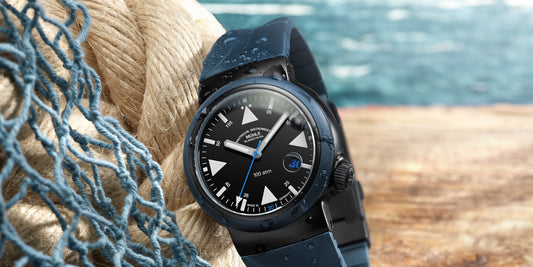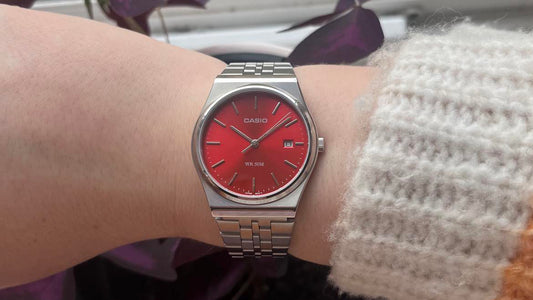A deep dive into the incredible work of Grand Seiko...
Grand Seiko has gained considerable ground in the European market over the last few years and continue to go from strength to strength. In April this year, Seiko Watch Corporation established a new subsidiary company, Grand Seiko Europe S.A.S, responsible for the sales and marketing of the Grand Seiko brand in continental Europe. Flagship Grand Seiko boutiques can now be found in Paris and London and it’s safe to say that they are a household name for watch enthusiasts around the world. But although they are hugely respected, not everyone is yet on-board with the Japanese brand.
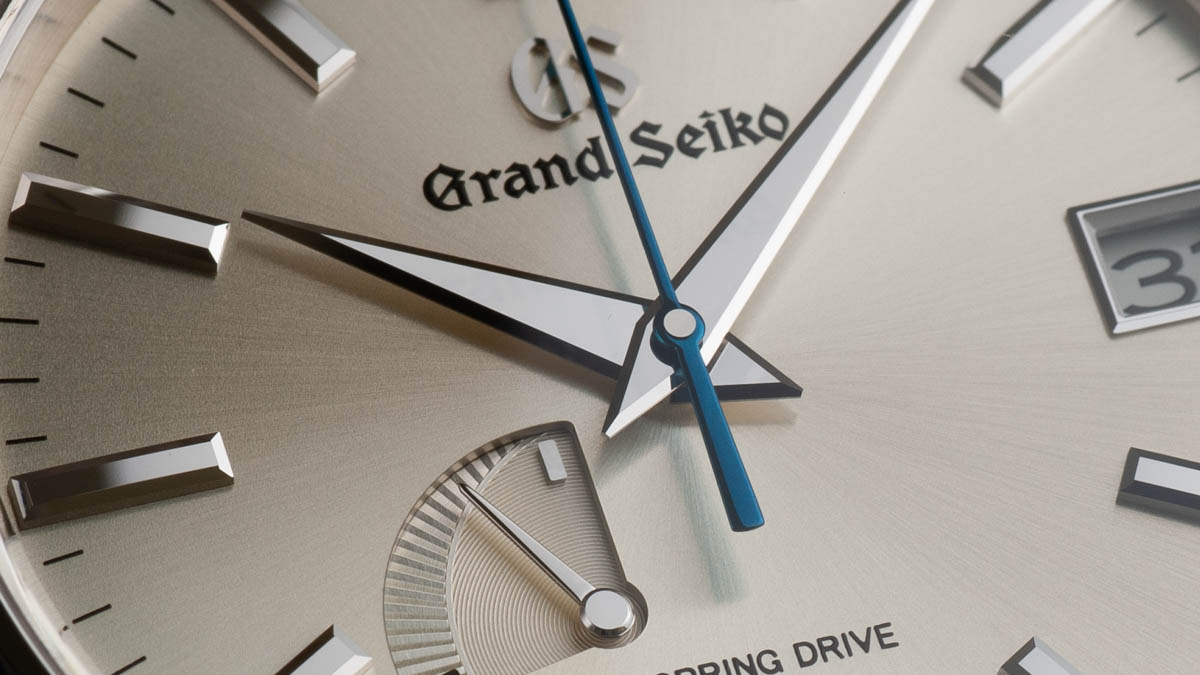
The Grand Seiko SBGA373 Spring Drive - Image Credit: Guy Parker
I was somewhat on the fence. Grand Seiko had intrigued me for some time, but to be perfectly honest their designs initially didn’t do much for me and they looked, dare I say it, a little bland. Not having much of an engineering mindset, I wasn’t totally convinced by their Spring Drive movements either and got somewhat blinded by the fact quartz was frequently mentioned in the same breath as Spring Drive. To my mind mechanical and quartz shouldn’t mix. Mention quartz to me and it just brought to mind cheap battery watches from the 70s and 80s, so the concept of ‘luxury’ and quartz certainly weren’t synonymous with one another. The fact that there was no dealer anywhere near me was the final nail in the coffin for Grand Seiko as far as I was concerned and I rather nonchalantly dismissed them. Besides the fact I could buy two Swiss automatics from very reputable brands for about the same price as a Grand Seiko.
It wasn’t until a local store became a dealer for Grand Seiko that I revisited the idea. At the time I was also eyeing up a Rolex Datejust, but I had to at least see Grand Seiko in the flesh before I completely put the idea to bed. And I have to say, I’m glad I did
From the moment I was handed a watch from the display case it became strikingly apparent that Grand Seiko’s own marketing department hadn’t been doing the watches justice with their lacklustre product photography (thankfully it’s improved greatly since). I must have worked my way through a dozen or so models, both mechanical and Spring Drive, including the iconic snowflake, which in all honesty was the main drawcard for the visit. However, whilst the snowflake with its textured dial was certainly stunning, it came across as a little too cold for me and I gravitated to the SBGA373 for its champagne dial, warmer tones and more unique case shape. It wasn’t even a model I’d considered before, but when I peeled back the protective film from the dial, this thing just sprang to life and I swear my jaw literally dropped to the floor. Unless you’re used to trying on watches from the higher echelons of watchmaking, nothing really prepares you for seeing Grand Seiko in the flesh for the first time and the SBGA373 really did blow me away in a way which no other watch had done, including the Rolex Datejust I had been coveting.

The Grand Seiko SBGA373 Spring Drive - Image Credit: Guy Parker
The day at the AD had been a real eye-opener and in a somewhat unexpected turn of events, Grand Seiko was now in pole position for my next watch purchase. Not only that, but I decided I was going to go ‘all-in’. To me, that meant one thing… Spring Drive.
After I’d saved some more pennies, I returned to store to pick up the SBGA373 which had stolen my heart and it took pride of place in my collection. But having now owned it for nearly two years, am I still in awe, or has the Zaratsu sparkle now worn off? Let me take you on a journey through my ownership experience…
Grand Seiko's ranges
Grand Seiko has three core ranges; Heritage, Sport and Elegance and prices range from £2,000 to over £160k. The stainless steel SBGA373 is priced at £4,700 and sits within the heritage range, which comprises what I’d call your ‘everyday wearers’. The Sports collection is made up of dive watches, chronographs, and sports GMT’s, whilst dressier offerings and manual wind calibres are to be found in the Elegance collection.
Once you’ve chosen your movement type and case style, the choice of dial layouts and complications are kept simple across the Heritage range. Decide if you want a GMT function, then whether you want a date and/or power reserve complication. The 44GS case with date and power reserve was the winning combo for me.
Grand Seiko SBGA373 Case

The Grand Seiko SBGA373 Spring Drive - Image Credit: Guy Parker
From a design perspective, the distinctive 44GS case is one of the standout features of the SGBGA373 and one of the few elements that gives the watch a strong sense of character. Introduced by the brand in 1967, the 44GS case style is unlike anything I’ve seen before and manages to cleverly juxtapose complex, angular, geometry with gently sloping and tapering curves. It’s an extremely complex case, and whilst the dimensions may have swelled somewhat from the pioneering watch of the sixties, the SBGA373 still retains modest proportions with a 40mm diameter and a thickness of 12.5mm. The lug to lug measurement is a very accommodating 46mm too, meaning it should sit within the sweet spot for most wearers. For me personally the dimensions are near perfect.
The wide, drilled lugs are faceted to several sides with squared-off ends that resemble a bug-eyed insect when looked at ‘end-on’. Grand Seiko flips convention on its head in terms of finishing by applying a brushed finish to the wide bevels found on the inner edges of the lugs and along the entire length of the mid-case. The rest of the case is Zaratsu polished. It’s an unusual approach, but one which really does seem to work. Knowing Grand Seiko this is undoubtedly a very considered move and it’s details like this that you only really notice when examining closely, for me well into ownership.
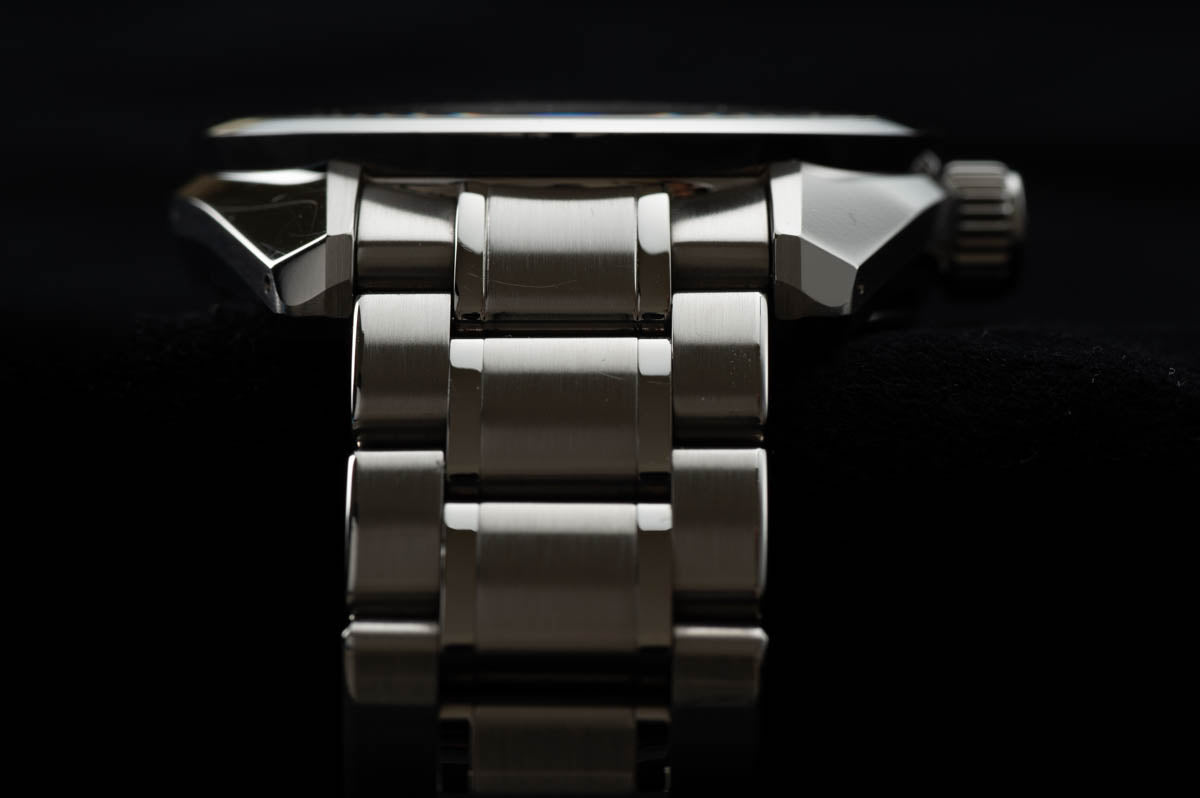
The Grand Seiko SBGA373 Spring Drive - Image Credit: Guy Parker
The side profile is flattering with a softly sweeping arched mid-case and lugs which help the watch hug the wrist nicely. The top side of the bezel slopes down slightly towards the case. When viewed from the side you can see that the bezel nestles into the lugs and case and also tapers inwards from top to bottom. The rear section of the case is undercut which helps the case look slimmer.
Zaratsu polishing has become synonymous with Grand Seiko and to me the 44GS case shape shows off the distortion-free, mirror-like polishing to its fullest, perhaps more so than any other case shape in the range. But it’s important to also understand Grand Seiko philosophy here; there is no light without shade. To illustrate this point, it’s worth noting that it is the brushed or ‘hairline’ finish (as Grand Seiko refer to it) that is the final stage of the case finishing. Yes, you heard me right, artisans only begin brushing sections of the case after the whole case has been Zaratsu polished. So they are effectively polishing sections to then unpolish them! According to Takahiro Ushiyama, the specialist in this process, this is “because the hairlines will become irregular if there is even the slightest distortion on the surface”. Now that’s a level of detail worth shouting about.
Water-resistance is 100m, which is more than adequate for a non-diver. A slightly domed sapphire crystal, which is anti-reflective on the inside, completes the package. In their literature, Grand Seiko refer to the sapphire as ‘dual-curved’, which I guess means the same as double-domed, but this isn’t perceivable.
The 9R65 Spring Drive movement

The Grand Seiko SBGA373 Spring Drive - Image Credit: Guy Parker
The SBGA373 is equipped with the ground-breaking 9R65 Spring Drive movement with 72-hour power reserve, first introduced in 2004. Grand Seiko makes final adjustments to the movement by hand and quote an accuracy rating of ±1 second per day / ±15 seconds per month (average). I’ve found the movement to perform impeccably and I’m getting around plus four seconds per month.
For those not familiar with the Spring Drive movement, it is not battery powered, but it is quartz regulated. The 30-jewel movement can be hand-wound and has a hacking second hand, allowing a precise time to be set.
The vast majority of its 200 plus components are just as you would find in a traditional mechanical watch. The main visible difference is that instead of seeing a pallet fork and balance wheel rhythmically rocking to and frow, you’ll see what Grand Seiko call a Glide Wheel spinning in one direction at a consistent eight revolutions per second. A mainspring, which is wound by the rotor, stores and gradually releases energy, just as in a traditional mechanical watch. However, instead of an escapement at the end of the gear train, Grand Seiko’s patented tri-synchro regulator (a quartz oscillator, Integrated Circuit and electronic brake) regulates the Glide Wheel maintaining a steady rate, bringing increased accuracy and less wear and tear on components. This is also what provides the impossibly smooth sweep of the second hand that is so mesmerising to watch. This unique and ground-breaking innovation to watch-making is certainly polarising, but unquestionably a feat of engineering.

The Grand Seiko SBGA373 Spring Drive - Image Credit: Guy Parker
The screw-down crown, with GS logo in relief, is neatly recessed into the case and tolerances are very tight with hardly any space around the crown. The crown feel is certainly unique to Grand Seiko and can be disconcerting at first. It has microscopic notches and feels almost a bit rubberised as though it’s damped. You feel considerable resistance turning the crown right up until the point it is fully screwed down. Each crown position for setting the time and date is precise and there is very little crown wobble.
Thankfully the sapphire caseback of the SBGA373 is not emblazoned with the oversized opaque logo and lion emblem (said to symbolise being the ‘king’ of watches), that completely obscures the view of the movement on some of Grand Seiko’s models. Instead, Grand Seiko have opted to use an extremely subtle watermark version of it, which is only visible in certain lights (I only noticed it for the first time when taking some macro shots of it). All-in-all it’s a very attractive movement, which although machine finished is well executed with wide bevelled edges and ‘Tokyo stripes’ adorning the main plates, bridges and signed rotor. Visible screws and jewels are nicely countersunk. Compared to other aspects of the watch though, there is some room for improvement such as blued screws and hand-finishing.
The Grand Seiko SBGA373 bracelet
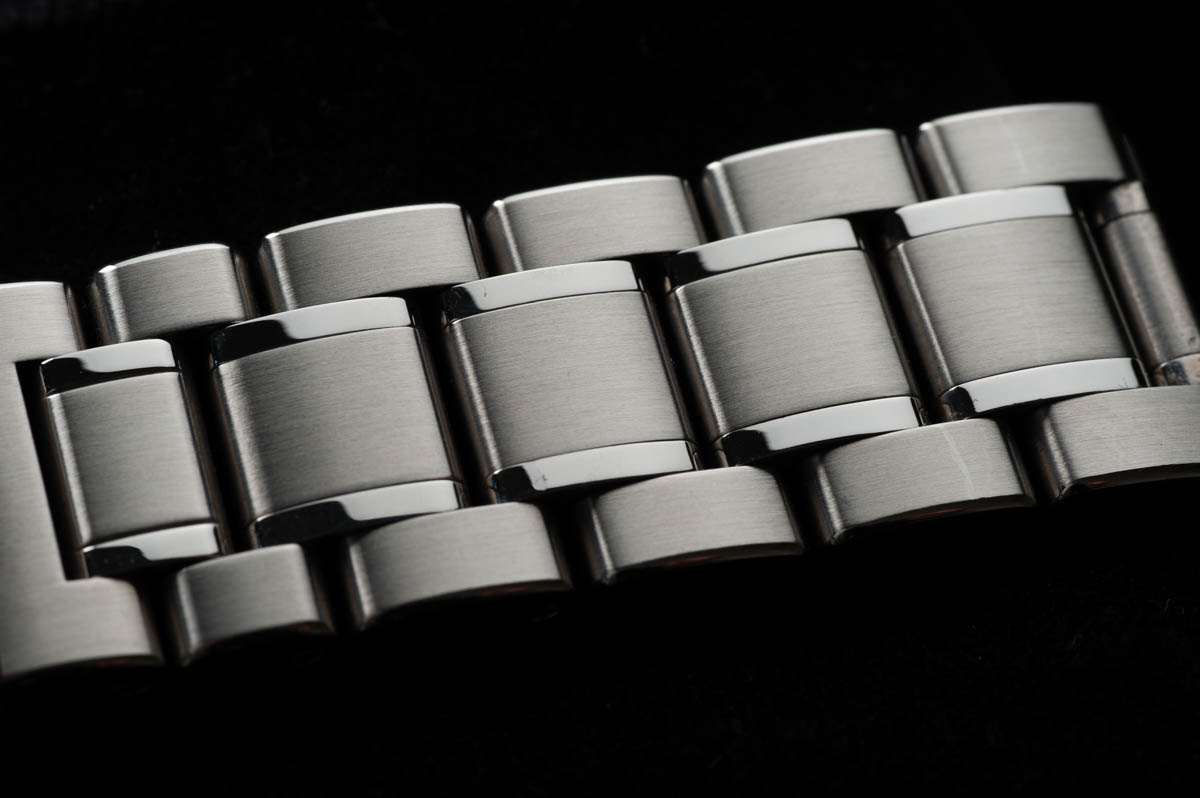
The Grand Seiko SBGA373 Spring Drive - Image Credit: Guy Parker
The bracelet is probably the most contentious element to any Grand Seiko, but I actually think the design of the five-link bracelet itself is very nice. The brushed outer links have polished sides and bevels, whilst the brushed centre links are flanked by polished sections. The links are all secured by screws. Although the bracelet is slightly lighter in weight than I was expecting, it’s hardly enough to register on my list of negatives and the watch doesn’t feel top-heavy.
I love the fact the three-fold clasp is secured by a twin-trigger deployant mechanism which is petite and doesn’t span awkwardly across your wrist like some can. I also like the embossed GS logo, which is well executed with the polished lettering contrasting against the sand-blasted background. And whilst you’d be hard-pushed to say the bracelet is exceptional, I honestly can’t find much to complain about. Except that is when it comes to the lack of micro-adjustment. This really gets my goat. It’s not a problem if you’re lucky enough to get a good fit by finding the right combo of full and half-links, but if like me that’s not achievable, it becomes a major cause of frustration. I’m a bracelet guy, so not having it fit properly has really had a negative impact on my enjoyment of the watch. It also means I’ve effectively now got the best part of a grand sitting in a drawer unused. It would also be nice if the bracelet had a quick-release mechanism to minimise chances of scratching the beautiful Zaratsu finish when changing the bracelet for a strap.
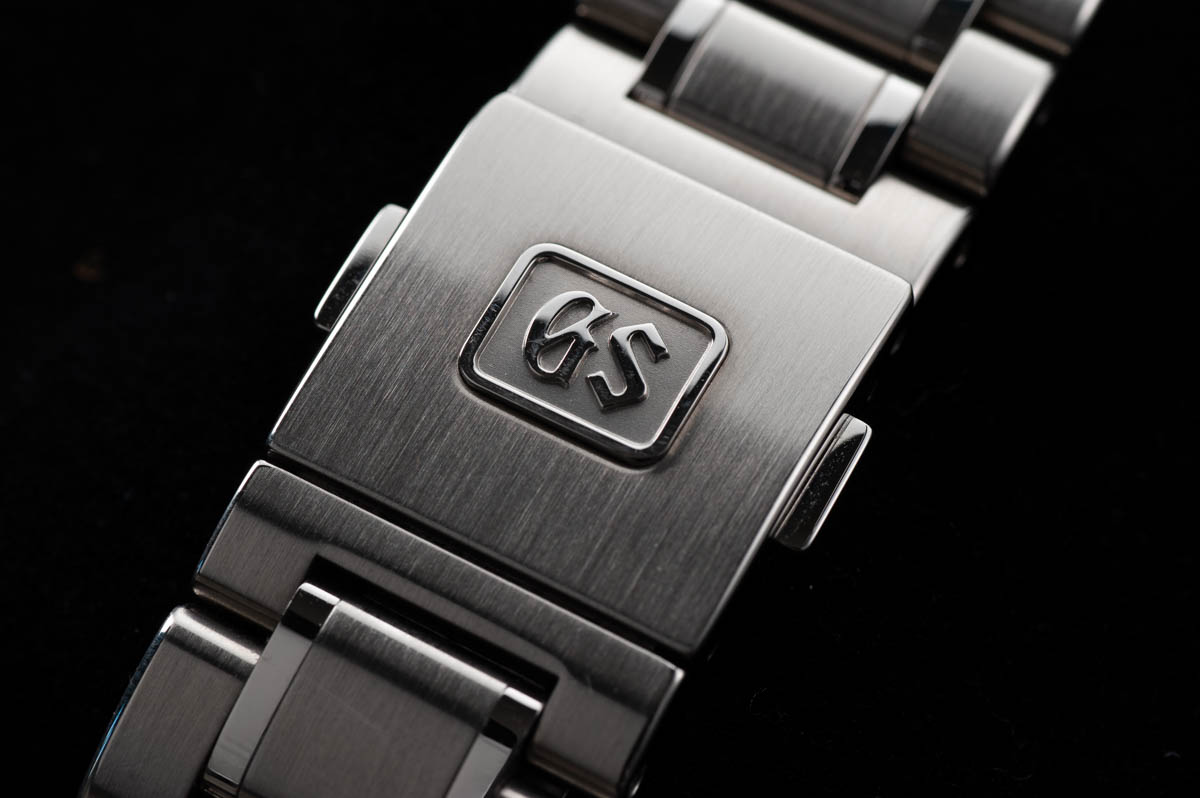
The Grand Seiko SBGA373 Spring Drive - Image Credit: Guy Parker
Talking of straps, you might also be disappointed if you were to order a Grand Seiko leather strap. They are beautiful and supple, but expensive and come with an awful deployant clasp that is bulky, clumsy and uncomfortable (and depending on your point of view, orientated the ‘wrong’ way’). I’ve ended up fitting an aftermarket strap to mine, but bear in mind you’ll be somewhat restricted for choice in that department too thanks to the uncommon 19mm lug width. However, thankfully there is more choice than there once was thanks to companies such as WatchGecko.
Click here for Part 2 where we take a further look at the dial details, wearability and a few negatives...


